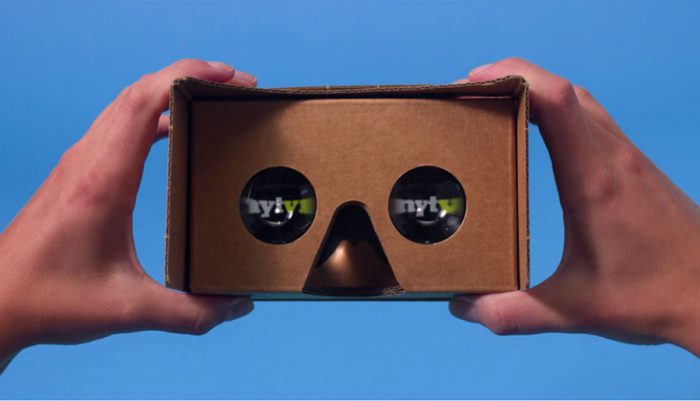
With virtual reality, The New York Times has told viewers the stories of young refugees, taken them on the campaign trail, and helped them experience mourning in Paris. Now, it’s taking them to Pluto.
With “Seeking Pluto’s Frigid Heart,” Times science writer Dennis Overbye will take viewers on an virtual tour of the planet’s surface. The project, which will make an appearance at the Tribeca Film Festival, goes live later this month in conjunction with a new shipment of 300,000 Google Cardboard viewers to Times subscribers. (The Times handed out a million of them back in November.)The new project marks a significant milestone for the Times. Unlike its previous VR projects, which were created in tandem with VR production companies such as VRSE, its Pluto experience was created entirely by the Times science department and graphics desk. That’s evidence both of the Times’s commitment to the tech and of newsrooms’ evolving grasp of what it takes to produce videos with the technology, said Sam Dolnick, The New York Times’ editor overseeing VR.
“There are a lot of new questions about the technology, about the storytelling, about the editing. Part of what’s exciting is that everyone is figuring it out. Even the experts have only been doing it a year, so it feels very wide open,” he said.
Dolnick said that virtual reality is at its best when it transports people to places they can’t visit on their own, making a virtual trip to Pluto one of the most powerful applications of the technology. But The Times has other projects in the works. This week it said that it’s also working on its first crop of episodic series, evolving the one-off approach to virtual reality that it and other news organizations have taken.
I spoke to Dolnick about The Times approach to VR, the evolving ethics of virtual reality journalism, and why The Times sees a real future in what it calls “meditative VR.”
The Pluto project is a different use of the medium in that it takes you somewhere that you can’t go but lets you experience the wonders of another planet in a way that a traditional tech story, or even a traditional video, can’t really convey.
We’re also excited to launch those episodic series this year. The idea is to do proper VR shows that have a through-line and episodic structure. We think that will go a long way toward bringing people back.
We’re also experimenting with formats. We’re looking at an experience that we jokingly call “meditative VR.” These are single-shot, no-cuts videos of some beautiful place. You’re at a Jamaican beach at sunset, a Canadian waterfall, and you’re just there. And you look around. There’s no story, there’s nothing happening. I don’t even think it’s necessarily journalism. It’s just transportive and something that can be really powerful in VR.
Shooting VR is like setting a bear trap. You put it down and hope for the best. So it’s a different kind of storytelling, but I don’t think it’s right to say it’s inherently journalistically compromised. There’s a way to do it that’s disingenuous, but that’s not the way we’re doing it.